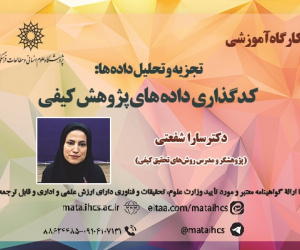دیومردُمان* واکاوی کیش دیویسنا در ایران باستان (مقاله علمی وزارت علوم)
درجه علمی: نشریه علمی (وزارت علوم)
آرشیو
چکیده
کیش دیویسنا که غالبا در تقابل با مزدیسنا مورد اشاره قرار می گیرد، از جمله کیش های رایج در ایرانِ باستان است که ردّپای آن تا روزگارانِ کهن تر قابل پیگیری و شناسایی است. هدف از نگارش این مقاله پژوهشی، تاریخی و دینی درباره این کیش است که با روشِ کتابخانه ای و استناددهیِ متنی صورت گرفته است. با بررسی متونِ اوستایی و پهلوی و بازخوانیِ برخی از کتیبه های باستان، چشم اندازی از اعتقادات دیویسنان و چگونگی برگزاری آیین ها و مناسک ایشان به دست می آید. در عین حال، مردمانِ دیویسنان به لحاظ باورها و آیین های خود، شباهت هایی با برخی گروه های دینی و قومی و یا برخی طبقات اجتماعیِ عصر خود دارند که شناخت آنها را دشوار ساخته و ترسیم روشنِ خطوطِ شکل گیری، زیست و موقعیتِ آنها در میان مزدیسنان را دشوار می سازد. با این همه، دیویسنان به لحاظ سیاسی، دینی و اجتماعی از چنان تأثیری برخوردار بودند که به یکی از دغدغه های شاهان هخامنشی تبدیل شدند و در اوستای کهن و متأخر، یک کتیبه هخامنشی و نیز متونِ دست اولِ پهلوی مورد طعن و لعن قرار گرفتند. توجه به تحولات زبانیِ اقوامِ هندواروپایی و سپس هندوایرانی، دقت در دگردیسی های معنایی و مصداقیِ برخی واژگان کلیدی همچون دَئِوَه، شناخت و بررسیِ خط تمایز بین کاست های مختلف اقوام ایرانی همچون مادی ها و پارسی ها، کوشش در فهم درستِ بنیادهای الهیات مزدیسنایی همچون ثنویت و ریشه یابیِ علتِ رواج یا ممنوعیت برخی آیین ها همانند رسم قربانی خونین، به فهمِ بهترِ کیشِ دیویسنا کمک می کند. آنچه که در پایان به عنوان نتیجه پیش رویِ پژوهشگر قرار می گیرد، وجود مفهومی و مصداقی سه دسته دیو و به تَبَعِ آن، سه گروه دیویسنان در متون اوستایی و پهلوی است.Inspetion of Divyasna Cult in Ancient Iran
Divyasna cult, which is often mentioned in opposition to Mazdayasna, is one of the common cults in ancient Iran, whose traces can be discovered back to the ancient times. Examining Avesta and Pahlavi texts and re-reading some ancient inscriptions assist us to approach their beliefs, rituals and ceremonies. Be that as it may, in terms of their beliefs and rites, believers of Divyasna have resemblance with some religious and ethnic groups or some social classes of their point in history, which makes it difficult to acknowledge them and to clearly outline the edges of their genesis, life and stance among the Mazdaysnans. Notwithstanding this, Divyasnans had such gigantic political, religious and social impact that they became one of the agitations of the Achaemenid kings, and they came to be the subject of repetitive objurgation in the ancient and later Avesta, an Achaemenid inscription, as well as the first-hand Pahlavi texts. Taking notice of the linguistic developments of the Indo-European and then Indo-Iranian people, punctuality in the metamorphoses of the meaning and examples of some key words such as Daeva (=demon), acknowledgement and inspecting the line of distinction between different castes of Iranian people such as Medians and Persians, endeavor to precisely apprehend the substructure of Mazdaysnan’s theology, for instance dualism And unearthing the underlying cause of the prevalence or prohibition of certain rituals, such as blood sacrifice, helps to be cognizant of the cult of Divyasna more meticulously.








